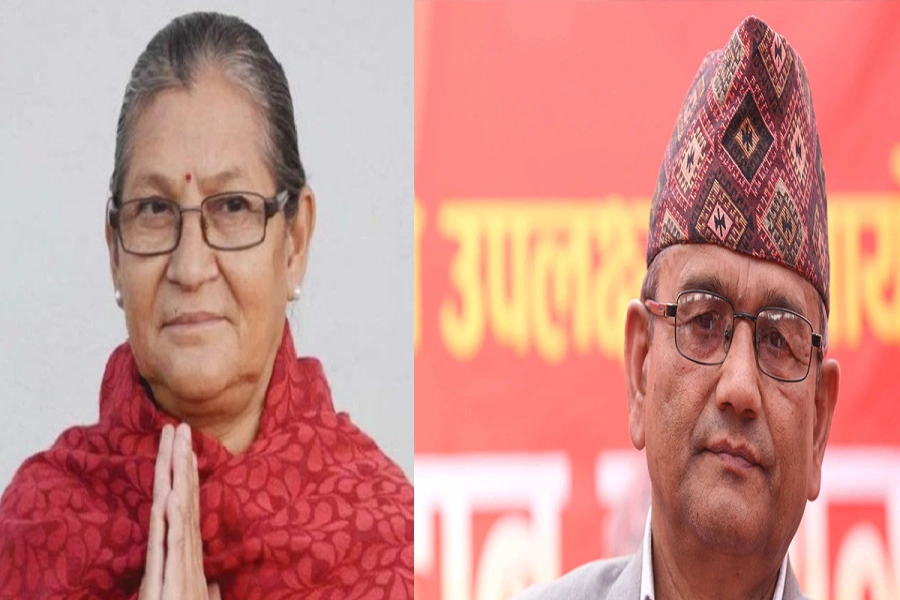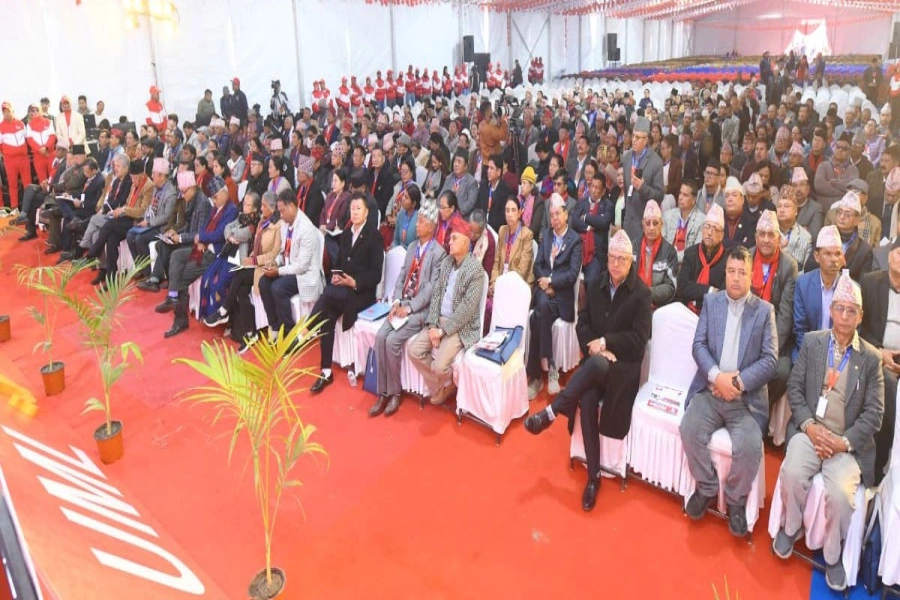KATHMANDU, June 17: It is a delight to pose for photographs in front of decorative statues and colossal monuments. Who would want to miss it? Such pictures, with monuments in the background, tend to enhance portraits eventually qualifying for a spot on your Facebook, or Instagram page. But, have you ever wondered the hard work each artist involved in the making of such megastructures endure? We share the story of one of such artists who is working to unveil a 33 feet tall Manjushree statue, made from stone, in three months time.
Veteran sculptor Chandra Shyam Dongol, and his crew have been stationed in Chovar since 2012. The middle-aged Dongol’s affection for stone carving got him to try a larger than life attempt atop Chovar. “My father inspired me to pursue stone carving while I was at grade IX. I have been involved in this line of work for 25 years now. After my SLC (now SEE) I joined Lalit Kala Campus to study art,” he stated and added that education played an important role to help him understand the value of Nepali traditional art.
Currently an art faculty in Srijana College of Fine Arts, he has been teaching traditional stone carving for four years. About the current project he explained, “I always aimed to create history through my work and have a strong desire to create stone statues that are larger than life. In 2012, representatives from Jal Binayak Community Forest User Group approached me and I showed my interest to work with them.” In a conversation with the artist, he admitted of the group rejecting his proposal for construction of a 105 feet tall statue. He further added, “I finally convinced the group for a 33-feet-tall stone statue, representing 33 crore gods that are depicted in the Hindu beliefs.”
Manjushree Park in limbo as jurisdiction dispute drags on

He further listed down the challenges in initiating the project. The first challenge came in the form of assembling required resources for the construction. Then the constant journey to government offices for official approval to use black blastic rocks followed soon after.
Though he managed the rocks from Pharping, he was left with limited resources compelling the use of cement for the base. He also complained of the commotion the locals affiliated with the political parties created while bringing the construction materials. Even worse, there was even a time when he faced death threats. He stated, “We choose life over the rocks. The rocks are still lying in Pharping. I feel hurt whenever I go there and see them.”
With his team of eight and the budget of Rs 25,000,000, the statue is in its current shape. “I am in debt because of this work. The committee also does not have the money required for construction. I am doing this work due to my passion for creating history,” Dangol shared.
He was driven towards creating history after attending a Chinese expo in 2010. There, an 85-year-old elderly praised him just for being a Nepali artist. The standard Nepali crafts have maintained inspired him to work to enhance traditional art and establish a newer identity.Moreover, another challenge for artist like him is the country’s system that hinders in every step of their work. He adds, “We want to corporate with the system, but the policies are not in our favor. Then, the available resources, such as black blastic rocks are hammered into smaller stones used for the construction purpose. My main concern is that nature has limited resources, and such valuable rocks should be used properly.”
Dangol chose stone carving over other forms of traditional art because of its longevity. However, it takes a lot of strength, mental and physical to create such master pieces. Looking at Dongol, it is a pity that artists like him has to go through so much.
He believes, “In life if you are doing something big, then you have to accept you are going to face complex challenges along the way. And the support from my family and people who believe in me give me the endurance to overcome such challenges.”






































-1765616104.webp)